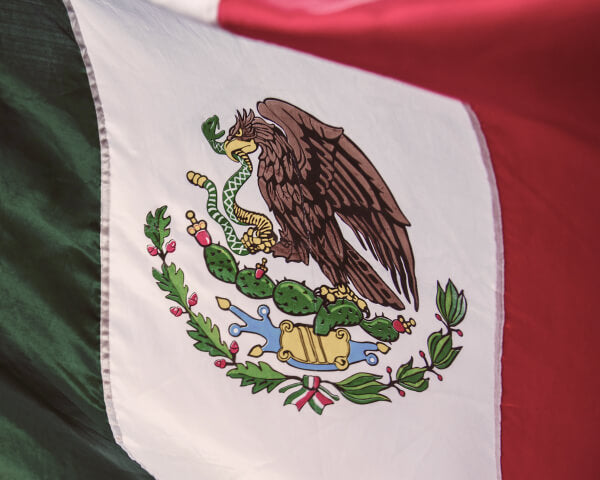In our modern world of fast fashion and ever-changing trends, it's all too easy to accumulate excess clothing. Think about your own closet for a moment. Whether it's due to outgrown sizes, evolving style preferences, or simply the wear and tear of daily life, many of us find ourselves with a surplus of garments that we no longer wear or need.
While the instinctive response might be to donate these items, not all clothing is suitable for charitable donation. This can lead to people disposing of clothes instead. Regrettably, the majority of clothes end up in landfills where they will undergo decomposition and emit harmful chemicals and toxins into the environment. To put things in perspective, next to oil, the clothing and textile industry is the second most polluting industry in the world.
As a sustainable fashion brand, we're big believers in reducing textile waste as much as possible which is why we want to share sustainable alternatives to simply discarding your clothes in the trash. Let's take a look at what you can do with old clothes that cannot be donated, particularly with how you can recycle clothes and contribute to a greener world.
Understanding Textile Recycling
Before delving into alternative solutions, it's important to grasp the concept of textile recycling. Textile recycling is the process of reusing or repurposing old textiles, such as clothing, linens, and fabrics, to create new materials or products. Rather than discarding these items into landfills, textile recycling aims to divert them from waste streams and give them a second life.
Textile recycling can involve various methods, including shredding old clothes to create new fibers, transforming fabrics into insulation materials, or upcycling garments into entirely new products. This sustainable practice not only reduces the environmental impact of textile production and disposal but also conserves resources and minimizes waste. Textile recycling is a crucial component of a circular economy, where materials are reused, recycled, and repurposed to extend their life cycle and reduce the need for new resources.
So, Can I Recycle Clothing?
Absolutely! However, clothes can't simply be tossed into the recycling bin typically found around our homes. Instead, they require specialized handling at designated recycling centers or can be repurposed through reuse and upcycling methods. Surprisingly, clothes can even be composted, provided they're crafted from natural fibers.
By choosing to recycle our clothes, we not only conserve energy, water, and resources but also divert them from ending up in landfills. Given this immense resource expenditure, it's clear that discarding clothes after a single use is simply unsustainable.
Exploring Recycling Options
While clothes can be disposed of in the garbage, they certainly shouldn't be placed in the recycling bin. To properly recycle clothes, they must be delivered to a textile recycling center. This is crucial to combatting the landfill crisis our planet currently faces. Remember, a recycle bin is designated for papers, plastics, cans, and bottles, with the possibility of composting if your area provides such services. Clothes don't belong in any of these bins, emphasizing the importance of exploring alternative recycling methods.
If your old clothing isn't in good enough condition to be donated, consider exploring a textile recycling program in your area. Many cities offer textile recycling bins or curbside recycling services specifically for clothing and other textiles. These programs accept clothing items regardless of their condition, as they can be recycled into various materials such as rags, insulation, or even new fabrics.
Furthermore, some textile recycling programs have partnerships with local businesses or manufacturers that specialize in repurposing old textiles. By supporting these initiatives, you not only divert clothing from landfills but also contribute to the development of innovative solutions for recycling textile waste.
By familiarizing yourself with the various ways to recycle clothes, you can actively contribute to sustainability efforts and minimize environmental harm.
Utilizing Thrift Stores and Donation Centers
While thrift stores typically accept gently used clothing, some may also have textile recycling programs in place for items that cannot be sold. Before discarding your old clothes, consider reaching out to local thrift stores, donation centers, or your local homeless shelter to inquire about their recycling initiatives. They may have partnerships with textile recycling programs or know of alternative solutions for disposing of old textiles responsibly.
Additionally, donating old clothes to thrift stores and donation centers can indirectly support textile recycling efforts. By providing a steady supply of used clothing, these organizations help sustain the demand for recycled textile materials, thereby reducing the need for virgin resources and minimizing environmental impact.
Supporting Local Homeless Shelters and Charities
Another option for old clothes that cannot be donated is to consider local homeless shelters or charities. While these organizations may primarily accept clothing in good condition, they often have networks or partnerships with textile recycling programs to ensure that all donated items are put to good use. Your unwanted clothing could provide warmth and comfort to those in need or be recycled to generate funds for essential services.
Moreover, supporting local homeless shelters and charities contributes to community resilience and social cohesion. By donating old clothes and supporting textile recycling initiatives, you're not only reducing waste but also making a tangible difference in the lives of others.
Give to Family or Friends
You might own clothes that are still in excellent condition but no longer suit your style or size. In such instances, consider passing them on to friends or family members who would cherish them. For example, imagine receiving a shirt from your sister as a gift, which, though thoughtful, doesn't quite align with your taste. As time passes, you outgrow the shirt, but it remains in great shape. Instead of discarding it, you could offer it to your younger sister, cousin, or friend, ensuring that it continues to be worn and appreciated.
Upcycle your Clothes
If you’re unable to donate your clothes to a thrift store or if your clothes aren't recyclable, upcycling clothes is a creative and sustainable way to breathe new life into old garments. Upcycling involves transforming unused or worn-out clothing items into something of higher value or functionality. There are numerous ways to upcycle clothes, ranging from simple alterations to more intricate repurposing projects. For instance, old jeans can be turned into trendy denim shorts, while outdated T-shirts can be transformed into stylish tote bags. By tapping into your creativity and resourcefulness, you can explore endless possibilities for upcycling your clothes, reducing waste, and extending the life cycle of your garments in an eco-friendly manner.
The Environmental Impact of Textile Waste
The disposal of old clothing in landfills poses significant environmental challenges. Textile waste contributes to carbon dioxide emissions and takes up valuable space in already overcrowded landfills. Moreover, the production of new clothing materials involves the use of resources such as water, energy, and harmful chemicals, further exacerbating its environmental impact.
By diverting old clothes from landfills through textile recycling, you're helping to mitigate these environmental consequences. Textile recycling reduces the demand for virgin materials, conserves resources, and minimizes greenhouse gas emissions associated with textile production and disposal.
Choosing Sustainable Practices
The planet is facing pollution from various sources, with textile waste emerging as a significant contributor. Our tendency to purchase clothes in excess, only to discard them after minimal use, generates vast amounts of textile waste that ultimately finds its way into landfills. This pattern of overconsumption, fueled by the fashion industry, has become a leading cause of environmental pollution globally.
Thankfully, there are viable solutions to prevent worn-out clothing from ending up in landfills. By opting for textile recycling over throwing away old clothes, you can make a positive contribution to the environment. Textile recycling not only reduces the amount of waste sent to landfills but also conserves resources and minimizes the need for new materials. Additionally, recycling old textiles helps to mitigate the release of harmful chemicals into the environment, promoting a cleaner and healthier world for future generations.
Remember, every small action counts. Whether it's recycling old textiles or making conscious choices in your daily wardrobe, you have the power to make a difference. Together, we can reduce textile waste, minimize our environmental footprint, and create a brighter future for all.
Our Commitment to Sustainability in Fashion
Here at People of Leisure, we’re deeply committed to promoting sustainability in fashion. Our journey is rooted in a passion for revolutionizing the industry by prioritizing eco-conscious materials and ethical production practices. We believe in making responsible choices at every step of the process, from sourcing organic cotton and recycled fibers to using low-impact dyes. Additionally, by opting for deadstock fabrics in our manufacturing process, we not only reduce waste by repurposing materials but also demonstrate our dedication to small-batch clothing runs.
Through our dedication to sustainability, we aim to inspire positive change and create a more ethical and environmentally friendly future for fashion, one conscious choice at a time.






